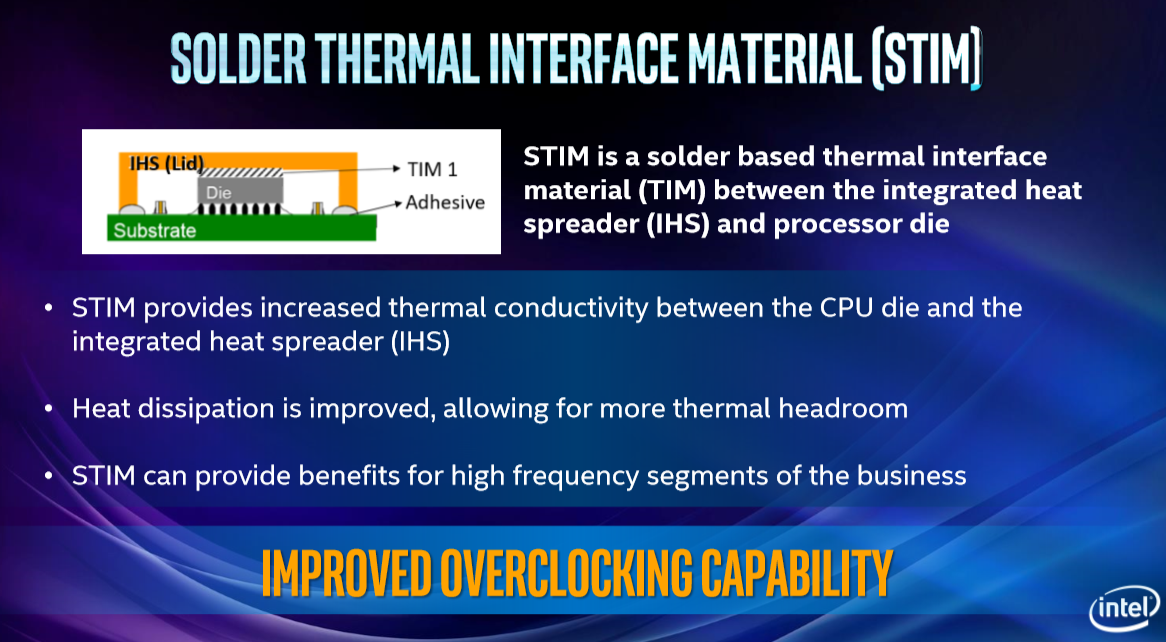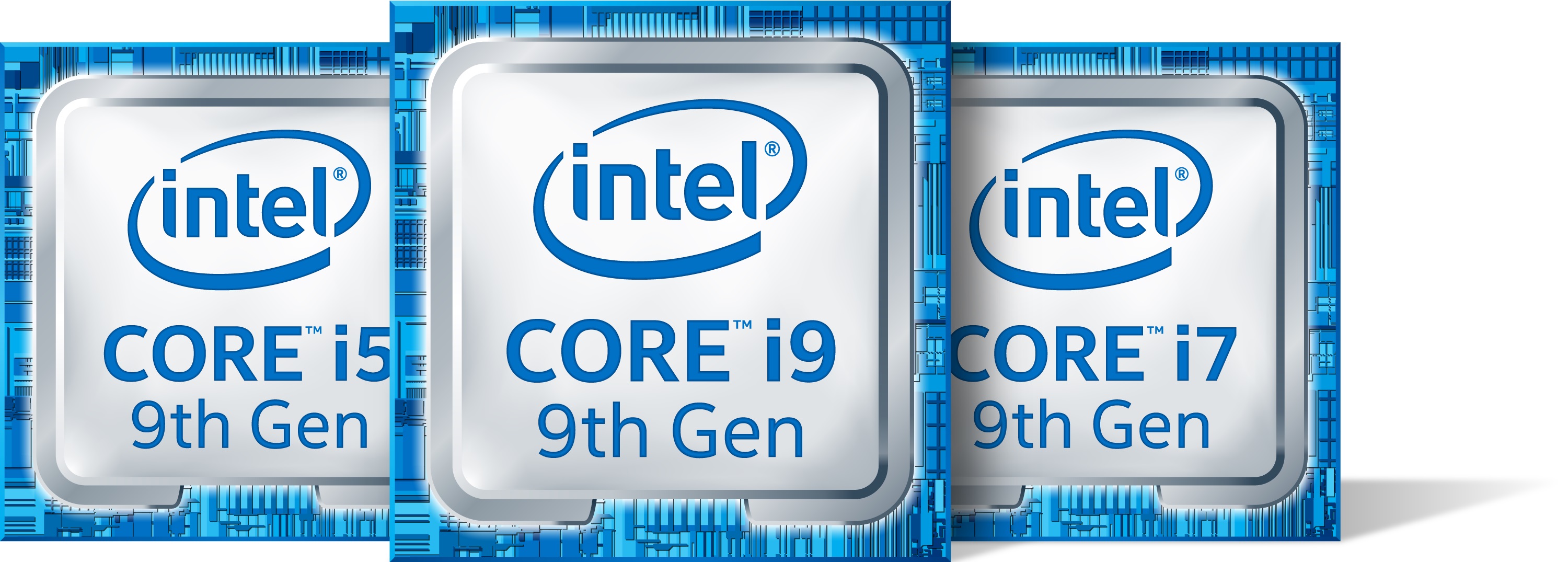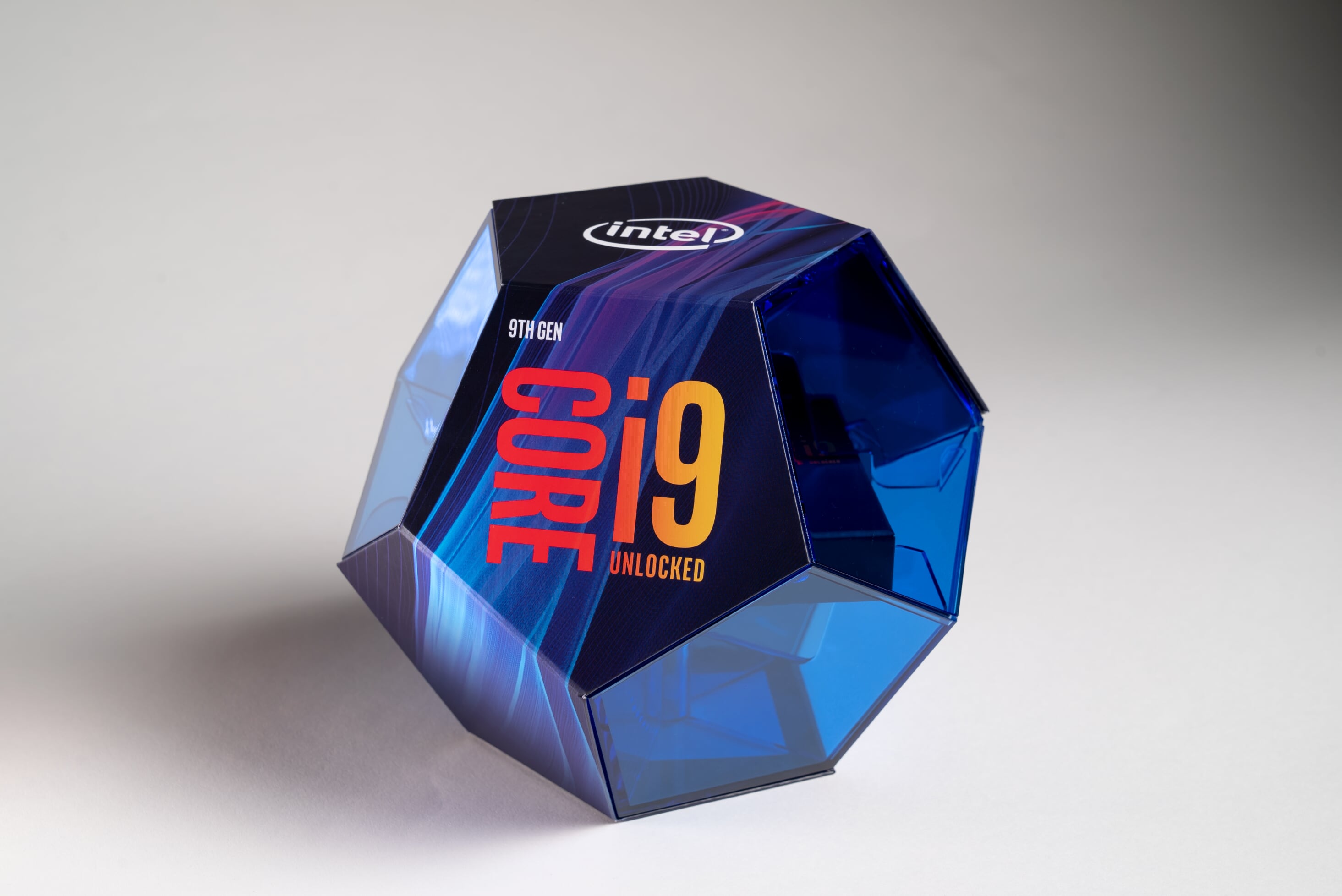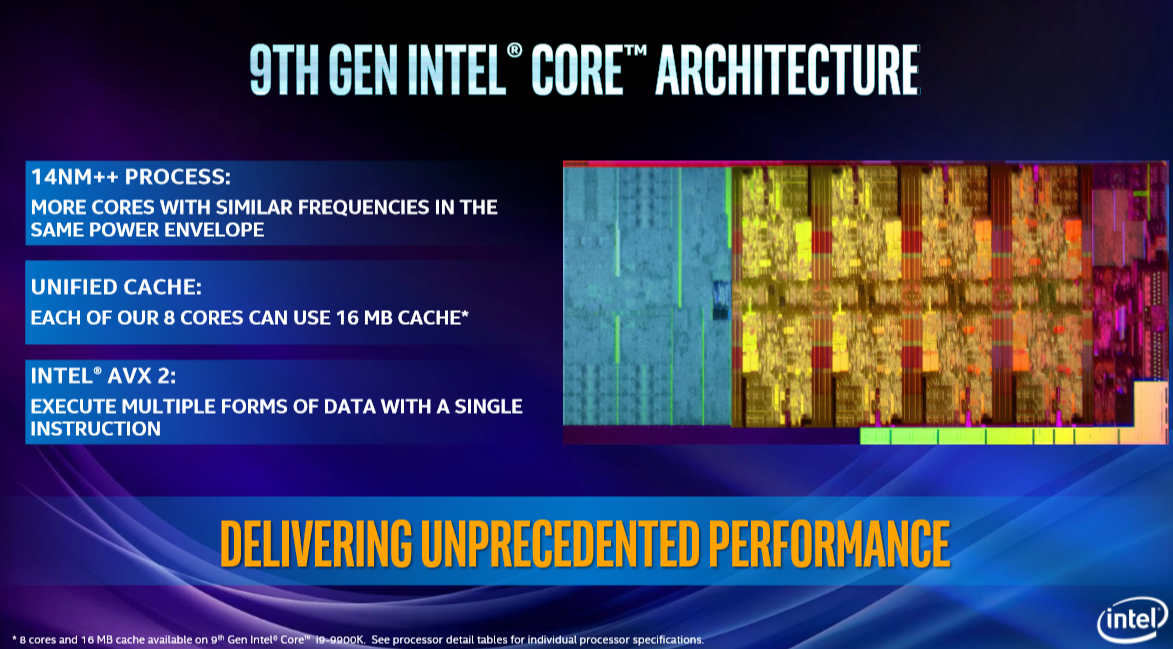Important preliminary remarks
The attempted dictation, influence and also conscious avoidance of launch results by a targeted sampling or Non-sampling seems to have become a big fashion. This test was also taken together by two editors on two continents at the end, because Intels did not normally sample for us and all new CPUs had to be obtained by other means. So we have actually merged the two, whose we were able to get hold of.
So you don't even have to work with NDAs to artificially pressure editors. My thanks are therefore explicitly to Paul Alcorn, who has completely recreated the gaming benchmarks with the three new K models, including the other CPUs and the patches and BIOS updates that have now been made (see also page 2). I could only do the complete workstation area, temperature and power consumption measurements with the Core i9-9900K.
This explains the slightly different CPU placement of the individual tests and the different chart graphics, because I could not export all parts again in the short time. Along with the recent Nvidia launch, it's an impossibility. Emotionlessly judged, Intel is clearly still doing far too well to achieve reasonable testing conditions for everyone. Here, too, AMD is already a big step forward
Introduction
AMD's new Ryzen product line, which offers up to eight cores for the mainstream desktop and has been fulfilling the basic performance promise of more cores for less money for some time, has put the company back in competition with Intel enthusiasts market. Intel has responded in some parts of its product portfolio over the past year, but the 9th-century core processors have been used. Generation is now the culmination of the company's efforts to fend off AMD's aggressive and successful push into the mainstream desktop.
AMD had long since left Intel behind in terms of affordable core numbers, so Intel's simple answer now is to increase the core numbers as well. Intel's first response came with the debut of the Coffee Lake processors of the 8th. Generation in 2017, which marked the company's first increase in core numbers since the introduction of Core 2 Duo processors more than a decade ago!
These initial adjustments consisted of adding two more cores to the Core i7, i5, and i3 families, but the nature of the processor design could allow more dramatic changes to take years to come onto the market. Intel's ongoing battle with its 10nm (node) process appears to have delayed a clearer response, but the company has now stepped up, even stepping up its efforts in response to AMD's powerful Ryzen processors.
The processors of the 9th Generation, also known as Coffee Lake Refresh, is expected to set standards again with a new eight-core Core i9 series and a split Core i7 family with two additional cores, but the latter will have to do without hyper-threading, which is the case for the customers is plentiful bitter. Intel also responds to several key points of AMD's performance promise, even visually on the sidelines for the most beautiful packaging.
Although I didn't manage to get such a box and had to get by with a naked engineering sample from another source, Intel's new packaging for the Core i9-9900K has become quite pretty. A translucent plastic dodecahedron should now direct it, i.e. it is a twelve-sided housing. This is obviously a direct response to AMD's exotic Threadripper packaging, which has set a new bar for the processor market. It's not important, but if so, because it does!
Intel also switched back to the use of the Long Customer-requested Solder Thermal Interface Material (STIM), which had been abandoned many years ago in order to better absorb the higher heat output of the additional cores and to increase overclocking. Facilitate. Whether and at what price these new processors with the Core i9-9900K will make it onto the shelves and whether it could be worth the extra charge to the customer, will probably be answered by today's test.
The Intel Core i9-9900K and the Little Brothers
Intel's Coffee Lake Refresh launches three new "K" series processors. All three processors have the same underlying Coffee Lake microarchitecture, which is based on the 14nm++ process as the previous generation models. As expected, Intel splits its families into Core i7 and i5 models, but the 9th Core processors. Generation marks the debut of the new flagships of the eight-core 16-thread Core i9-9900K series for the desktop.
As expected, all Intel's "K" series processors are manufactured in the well-known 14nm++ process, feature an integrated UHD 630 graphics engine, unlocked multipliers that enable overclocking, and support for the two-channel DDR4-2666. However, Intel is responding to increasing RAM density by doubling storage capacity support up to 128GB. At least in theory. but more on that later.
| Core i9-9900K | Core i7-9700K | Core i5-9600K | |
| Architecture | Coffee Lake | Coffee Lake | Coffee Lake |
| Socket | 1151 | 1151 | 1151 |
| Cores / Threads | 8 / 16 | 8 / 8 | 6 / 6 |
| Base clock (GHz) | 3.6 | 3.6 | 3.7 |
| Turbo Boost ( Active Cores – GHz) | 1-2 Cores – 5.0 4 Cores – 4.8 8 Cores – 4.7 |
1 Core – 4.9 2 Core 4.8 4 Core 4.7 8 Core 4.6 |
1 Core – 4.6 2 Core – 4.5 4 Core 4.4 6 Core 4.3 |
| L3 Cache | 16MB | 12MB | 9MB |
| Process | 14nm++ | 14nm++ | 14nm++ |
| Tdp | 95w | 95w | 95w |
| Memory clock | DDR4-2666 | DDR4-2666 | DDR4-2666 |
| Memory Controller | Dual-Channel | Dual-Channel | Dual-Channel |
| PCIe Lanes | x16 | x16 | x16 |
| Integrated UHD Graphics GT2 (Base/Boost MHz) | 350 / 1200 | 350 / 1200 | 350 / 1150 |
| Retail price | $488 – $499 | $374 – $385 | $262 – $263 |
The Core i9-9900K's Lot (STIM) improves thermal transmission efficiency between the Die and the Heatspreader, which in turn allows Intel to install two more power-hungry cores while still moving in the 95-watt frame for the TDP. Note: TDP is not equal to power consumption! The Core i9-9900K has a base clock frequency of 3.6 GHz, which is only 100 MHz less than the previous generation six-core core i7-8700K after the two additional cores were added.

This underscores the advantages of using Solder-TIM over the thermal paste intel used on the original Coffee Lake processors. The material used in all three new models also improves overclockability. This should reassure the very enthusiasts who have praised AMD for using STIM in their Ryzen processors.
| Base | 1 Core | 2 Cores | 3 Cores | 4 Cores | 5 Cores | 6 Cores | 7 Cores | 8 Cores | |
| Core i9-9900K (GHz) | 3.6 | 5.0 | 5.0 | 4.8 | 4.8 | 4.7 | 4.7 | 4.7 | 4.7 |
| Core i7-9700K (GHz) | 3.6 | 4.9 | 4.8 | 4.7 | 4.7 | 4.6 | 4.6 | 4.6 | 4.6 |
| Core i7-8700K (GHz) | 3.7 | 4.7 | 4.6 | 4.4 | 4.4 | 4.3 | 4.3 | – | – |
| Core i7-8086K (GHz) | 4.0 | 5.0 | 4.6 | 4.5 | 4.4 | 4.4 | 4.3 | – | – |
| Core i5-9600K (GHz) | 3.7 | 4.6 | 4.5 | 4.4 | 4.4 | 4.3 | 4.3 | – | – |
| Core i5-8600K (GHz) | 3.6 | 4.3 | 4.2 | 4.2 | 4.2 | 4.1 | 4.1 | – | – |
The improved heat dissipation also enables impressive clock rates on the 9th-century models. Generation. The core i9-9900K sometimes reaches up to 5.0 GHz when two cores are active, surpassing the previous core i7-8086K, which increases to 5.0 GHz for a single core. As you can see in the graph above, Intel is driving the voltage/frequency curve with the new eight-core models – they have much higher boost multipliers on the entire line than the previous models.
The much higher turbo multipliers should be Intel's already leading performance for rather low-threaded tasks, such as most games. The additional cores will allow Intel processors to be more competitive on highly parallelizable workloads than Ryzen's eight-core models, long the strength of AMD, and one of the key selling points of the Ryzen 7 CPUs.
The X-Series Core i7-7820X is the most logical comparison to the Core i9-9900K in the benchmarks, but this processor has a fundamentally different design and also requires costly adjustments to the not-so-cheap X299 motherboards. In contrast, this expensive chip supports quad-channel memory, a step forward from the dual-channel of the Core i9-9900K and it also does not come with an integrated graphics engine.
To do this, it offers the mesh architecture instead of the Deep Diver that Intel uses on mainstream desktop processors. As we've seen in previous tests, this can have a negative impact on some common desktop workloads, so it's often not the best solution for enthusiasts and gamers. As expected, the two additional cores of the Core i7-9900K are also equipped with two additional 2MB in the L3 cache, resulting in a total of 16MB.
Intel's Core i7 series has traditionally had hyper-threading, which allows a core to run two software threads simultaneously to improve performance. The Kaby Lake processors offered eight threads with four cores, while Coffee Lake brought up to six cores and 12 threads. But the 9th. Generation of Intel processors breaks with this tradition. Now come the 95W Core i7 processors with eight cores without hyper-threading.
Hyper-threading results in about 15-20 percent more power per core under ideal conditions, so by cleverly removing the feature on the Core i7-9700K, Intel should make the eight-core, eight-threaded processor faster in most workloads than its 12-th-half processor. thread predecessor and thus maintains the carefully maintained distance in the hierarchy. Some applications also provide better performance on cores without hyper-threading, because context switching and thread migration to hyper-threaded cores can be associated with disadvantages in some applications.
The 9th Generation Core i5 series still has the same six physical cores without hyper-threading as their Coffee Lake counterparts. The 95W Core i5-9600K has 3.7GHz base clock and a maximum turbo to 4.6GHz. Intel pairs each core with a 1.5 MB L3 cache, which together add up to 9 MB. Since we did not receive an official price list from Intel, I have to work with the dollar list. However, the EIAs at Intel are probably only waste, at least for the moment:
| Model | Cores / Threads | Base clock | Turbo Boost |
Memory | PCIe Lanes | Cache | Tdp | EIA in USD |
| Core i9-9900K | 8 / 16 | 3.6GHz | 5GHz (1 / 2 Core) 4.8GHz (4 Core) 4.7GHz (6/ 8 Core) |
DDR4-2666 | 16 | 16MB | 95w | $488 |
| Ryzen 7 2700X | 8 / 16 | 3.7GHz | 4.3GHz | DDR4-2966 | 16 + 4 (NVMe) | 16MB | 105w | $329 |
| Core i7-9700K | 8 / 8 | 3.6GHz | 4.9GHz (1 Core) 4.8GHz (2 Core) 4.7GHz (4 Core) 4.6GHz (6/ 8 Core) |
DDR4-2666 | 16 | 12MB | 95w | $374 |
| Core i7-8086K | 6 / 12 | 4.0GHz | 5.0 GHz | DDR4-2666 | 16 | 12MB | 95w | $425 |
| Core i7-8700K | 6 / 12 | 3.7GHz | 4.7GHz | DDR4-2666 | 16 | 12MB | 95w | $330 |
| Ryzen 7 2700 | 8 / 16 | 3.2GHz | 4.1GHz | DDR4-2966 | 16 + 4 (NVMe) | 16MB | 95w | $229 |
| Core i5-9600K | 6 / 6 | 3.7GHz | 4.6GHz (1 Core) 4.5GHz (2 Core) 4.4GHz (4 Core) 4.3GHz (6 Core) |
DDR4-2666 | 16 | 9MB | 95w | $262 |
| Core i5-8600K | 6 / 6 | 3.6GHz | 4.3GHz | DDR4-2966 | 16 | 9MB | 95w | $279 |
| Ryzen 5 2600X | 6 / 12 | 3.6GHz | 4.2GHz | DDR4-2966 | 16 + 4 (NVMe) | 16MB | 65w | $229 |
| Ryzen 5 2600 | 6 / 12 | 3.4GHz | 3.9GHz | DDR4-2966 | 16 + 4 (NVMe) | 16MB | 65w | $199 |
The new product line also fits into existing 300-series motherboards after a BIOS update, but Intel's partners have also developed a range of Z390 motherboards. As we will see later, the Core i9-9900K in particular consumes enough power to make VRM selection and cooling an important topic.
Fortunately, most high-end Z390 motherboards have more robust power connectors than the Z370 models. Intel's Skylake X and Xeon processors feature AVX offsets that lead to lower frequencies when the processors encounter such instructions, but with the desktop models, what you see is also what you get. The customer should also provide a high-performance cooling solution for the Core i9-9900K and plan the right budget.
The grown, larger Die is hidden under the same heat spreader as the six-core models of the previous generation, so that even at STIM the thermal density is a challenge in cooling. Intel's official data sheet lists a 130W cooler as an entry-level solution. As we will see in a while, liquid cooling is mandatory when you think of OC.
- 1 - Einführung und Architektur
- 2 - Security Patches, Testsystem
- 3 - Synthetische Tests
- 4 - AotS: Escalation, Civilization, DoW III
- 5 - Far Cry 5, GTA V, Hitman
- 6 - Shadow of War, Project Cars 2
- 7 - Office- und Browser-Benchmarks
- 8 - Adobe Creative Cloud
- 9 - Encoding und Kompression
- 10 - Workstation 2D/3D Grafik
- 11 - Workstation Compute/Rendering
- 12 - Temperaturen und Kühlung
- 13 - Leistungsaufnahme
- 14 - Zusammenfassung




































Kommentieren